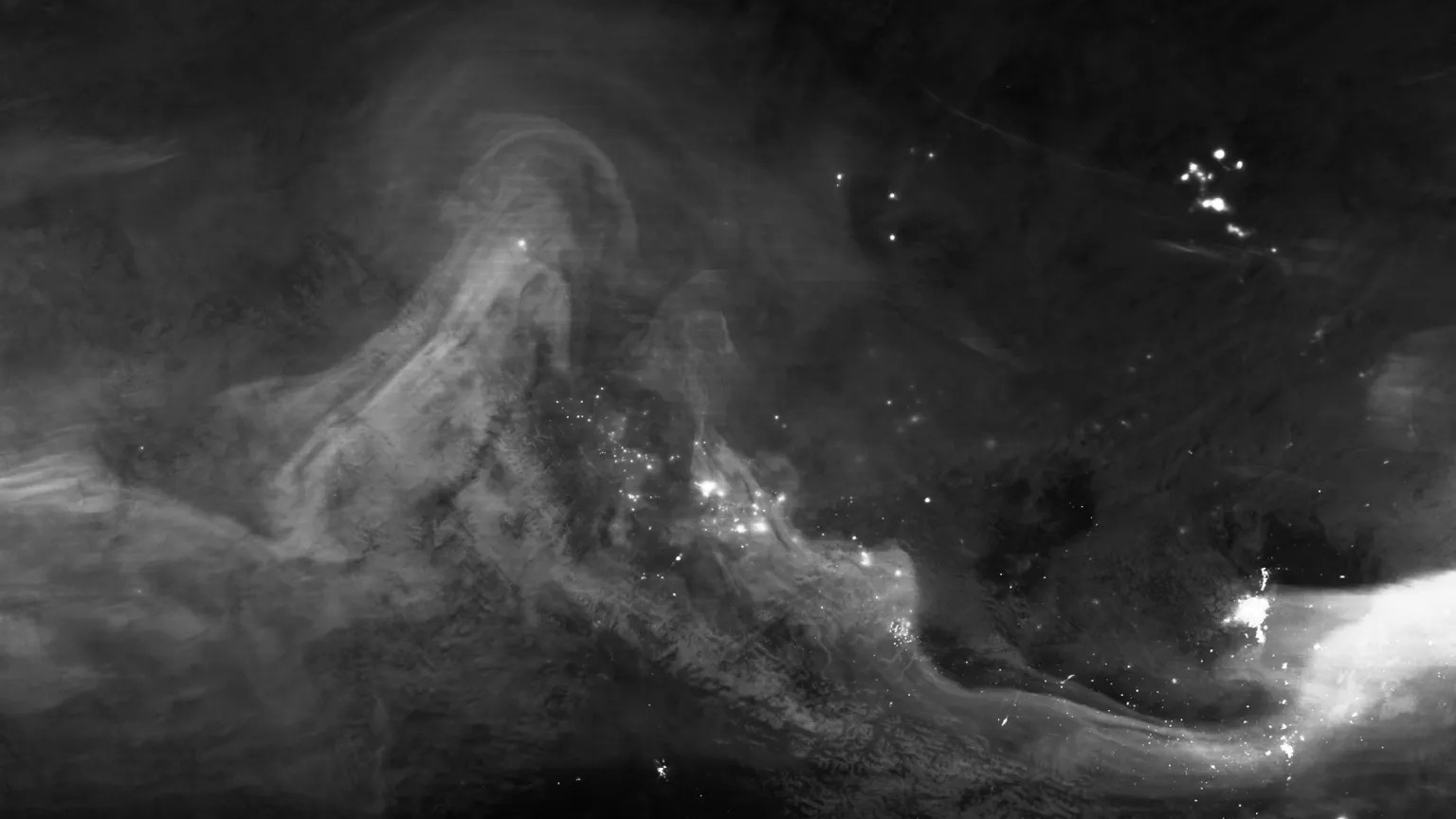
Generally, photos of auroras capture bright, colorful bands dancing across the night sky, but a new satellite view captures a spectacular auroral glow in a new light.
The Visible Infrared Imaging Radiometer Suite (VIIRS) instrument on the NASA/National Oceanic and Atmospheric Administration (NOAA) Suomi National Polar-orbiting Partnership (Suomi NPP) satellite imaged the aurora borealis, also known as the northern lights, over western Canada on Nov. 5, 2023 at 5:23 a.m. EST (1023 GMT).
The VIIRS instrument is sensitive to low-light emissions over a broad spectral region called the Day Night Band (DNB), which leverages reflected moonlight as well as terrestrial and atmospheric sources to detect visible light at night. In this case, the visible light emitted by the aurora streaming through Earth's atmosphere is captured by the VIIRS instrument and displayed as a gray-scale image, which NASA released on Jan. 17, 2024 in a statement.
Related: Where to see the northern lights: 2024 aurora borealis guide
"Auroras are colorful ribbons of light appearing in night skies, incited by a strong geomagnetic storm in Earth's magnetosphere," NASA officials said in the statement. "Multiple coronal mass ejections from the sun sent a surge of charged particles toward Earth. After colliding with Earth’s magnetosphere, some particles trapped in the magnetic field are accelerated into Earth's upper atmosphere where they excite nitrogen and oxygen molecules and release photons of light, known as the aurora."
Auroras generally appear as green bands, but can also occur in red, blue, violet, pink and white. These spectacular light shows are most commonly seen in high-latitude regions around the Arctic — where they are referred to as the northern lights (aurora borealis) — and in the Antarctic, where they are referred to as the southern lights (aurora australis).
Scientists have predicted an increase in solar activity this year that could trigger more frequent aurora displays for skywatchers. The sun is in its 25th solar cycle — a period of activity in its magnetic field that typically lasts about 11 years. Updated forecasts suggest the solar maximum, or peak activity, for the current cycle will occur from January to October 2024, according to a statement from the NOAA.
So, if you're planning to do some skywatching, check out our guide on where to see the northern lights this year. And, if you happen to spot an aurora, you can participate in the citizen science project called Aurorasaurus, which helps scientists verify aurora sightings so they can be further studied for space weather models.







